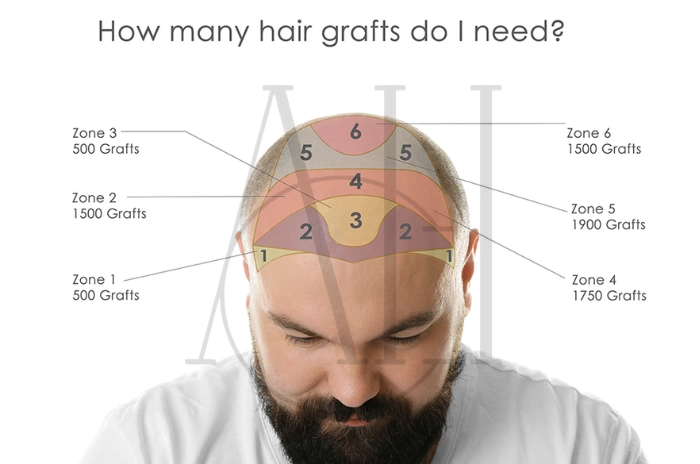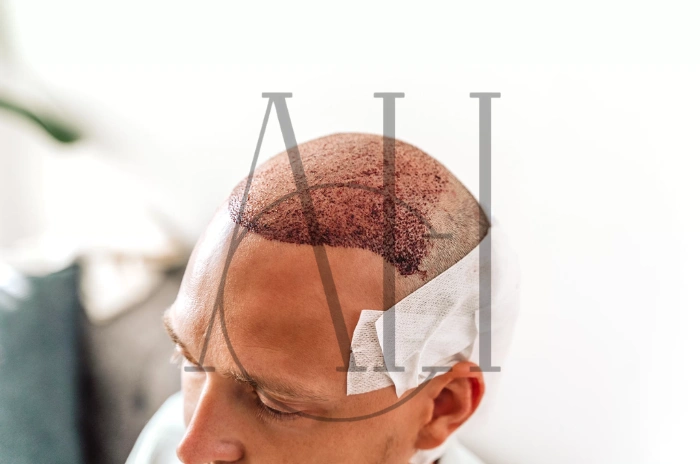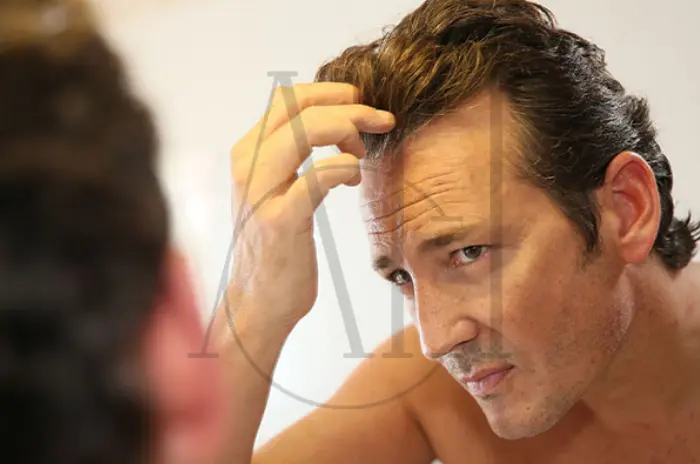Hair loss affects millions of men worldwide, with Norwood Scale 3 representing a critical stage where many individuals first consider hair restoration treatments. Understanding the characteristics, treatment options, and expected outcomes for Norwood 3 hair loss is essential for making informed decisions about hair transplant procedures.
Norwood 3 hair transplant procedures have shown excellent success rates when properly planned and executed by experienced surgeons. This comprehensive guide explores everything you need to know about treating stage 3 baldness, from graft requirements to expected results.
Table of Contents
ToggleWhat is Norwood Stage 3 Hair Loss
Norwood Stage 3 represents the first stage of hair loss that is typically considered “significant” by medical professionals. At this stage, the hairline has receded considerably, creating a deep M-shaped pattern that extends beyond the temples. The recession reaches approximately 2 centimeters or more above the upper forehead crease.
Key characteristics of Norwood 3 hair loss include:
- Deep temporal recession creating pronounced M-shaped hairline
- Hair loss extends beyond the temporal points
- Crown area may show early signs of thinning
- Remaining hair maintains good density in donor areas
- Overall hair loss affects 20-30% of the scalp
The Norwood 3 vertex classification indicates additional thinning at the crown area, which may require different treatment approaches. This stage often marks the point where men begin to feel self-conscious about their appearance and actively seek Norwood 3 treatment options.
Understanding Norwood Stage 3 Hair Loss
The progression to Norwood 3 hair loss typically occurs gradually over several years. Understanding the underlying causes and progression patterns helps in developing effective treatment strategies. Male pattern baldness at this stage is primarily driven by dihydrotestosterone (DHT) sensitivity in hair follicles.
Genetic factors play a crucial role in determining the rate and pattern of hair loss. Men with family histories of early baldness are more likely to experience rapid progression to Norwood Scale 3 and beyond. Environmental factors, stress, and lifestyle choices can also influence the timeline of hair loss progression.
DHT binds to androgen receptors in hair follicles, causing them to shrink and eventually stop producing hair. The hairline and crown areas contain the highest concentration of these sensitive follicles, explaining why Norwood 3 hair loss follows predictable patterns.
Recognizing stage 3 baldness early allows for more effective treatment outcomes. Hair follicles that are dormant but not completely destroyed can often be revitalized with appropriate interventions.
Hair Transplant Options for Norwood 3
Several hair restoration techniques are available for treating Norwood 3 hair transplant cases. The choice of method depends on individual factors including donor hair quality, patient age, lifestyle, and aesthetic goals.
FUE for Norwood 3 is the most popular modern technique, offering several advantages including minimal scarring with tiny circular incisions, faster recovery time compared to strip harvesting, and the ability to wear shorter hairstyles post-procedure. The FUE technique involves extracting individual follicular units from donor areas and transplanting them to balding regions. Norwood 3 FUE results typically show excellent naturalness and density when adequate grafts are available.
FUT, also known as strip harvesting, may be recommended for patients requiring larger numbers of grafts. This technique can provide more follicular units in a single session, making it suitable for extensive Norwood 3 treatment cases.
DHI represents an advanced variation of FUE, where extracted grafts are immediately implanted using specialized tools. This technique may offer enhanced survival rates for transplanted follicles and reduced handling time outside the body.

How many grafts are needed for Norwood 3
Determining how many grafts Norwood 3 patients require involves careful assessment of multiple factors. The graft count significantly impacts both the cost and final aesthetic outcome of the procedure.
For typical Norwood 3 hair transplant cases, frontal hairline restoration requires 1,800-3,500 grafts depending on desired density. Conservative approaches use 1,800-2,200 grafts, while high-density results may need up to 3,500 grafts. Combined hairline and crown treatment typically requires 3,000-4,500 total grafts and may need multiple sessions for optimal results.
Several variables influence Norwood 3 graft needs including hair characteristics such as caliber, natural curl pattern, and color contrast with scalp. Patient factors like age, facial structure, and personal aesthetic preferences also play crucial roles.
| Area | Graft Percentage | Typical Count |
|---|---|---|
| Frontal Hairline | 40-50% | 1,200-1,500 |
| Temporal Points | 20-25% | 600-800 |
| Mid-Scalp Transition | 20-30% | 600-900 |
| Crown (if affected) | 15-20% | 400-600 |
Treating Hairline Recession in Norwood Stage 3
Treating hairline recession in Norwood Stage 3 requires artistic skill and technical precision. The hairline serves as the frame for the face, making its design crucial for natural-looking results.
Creating an age-appropriate Norwood 3 hairline look involves avoiding perfectly straight or symmetrical lines, creating micro-irregularities that mimic natural hair growth, and considering facial proportions. Positioning relative to facial harmony includes forehead height considerations and balancing with eyebrow position.
Successful hairline restoration in stage 3 baldness requires meticulous attention to angulation and direction, following natural hair growth patterns and creating forward-angled placement in frontal areas. Density gradation involves lower density at the hairline edge (20-25 FU/cm²) and gradually increasing density posteriorly to achieve natural transitions.
The frontal hairline requires extensive use of single-hair follicular units to achieve natural softness. These grafts create the subtle transition zone that characterizes mature hairlines, preventing artificial appearance.
Success Rates of Norwood 3 Hair Restoration
Success rates of Norwood 3 hair restoration are among the highest in hair transplant surgery, with properly performed procedures achieving 90-95% graft survival rates. Multiple factors contribute to successful outcomes in Norwood 3 treatment cases.
Success in Norwood 3 hair transplant procedures is evaluated through graft survival rates, with excellent results showing 95%+ survival and good results achieving 90-95% survival. Aesthetic outcomes include natural hairline appearance, appropriate density distribution, and high patient satisfaction scores.
Surgeon expertise significantly impacts Norwood 3 results, including experience with hairline design, technical skill in graft handling, and artistic vision. Patient factors such as age, health status, donor hair quality, and realistic expectations also influence outcomes.
Norwood 3 before and after transformations follow predictable timelines. The immediate post-procedure phase (0-2 weeks) shows visible transplanted grafts with mild swelling. The shedding phase (2-6 weeks) involves temporary loss of transplanted hair shafts as a normal part of healing. Early growth (3-6 months) shows initial fine hair emergence with 30-40% of final density visible. Mature results (12-18 months) achieve full density and complete aesthetic outcome.
Best treatment for Norwood 3 cases provides lasting results when combined with appropriate maintenance strategies. Transplanted hair retains donor area characteristics, making it resistant to future DHT-related loss.
FAQ :Norwood 3 hair transplant results and graft planning
How many hair grafts are generally required for Norwood 3?
Most Norwood 3 hair transplant cases require between 2,200-3,500 grafts depending on the desired density and hairline design complexity.
What hair transplant options work best for Norwood 3?
FUE for Norwood 3 is generally considered the gold standard due to minimal scarring, natural results, and faster recovery times compared to other techniques.
What is the typical success rate for Norwood 3 transplants?
Norwood 3 hair transplant procedures achieve 90-95% success rates when performed by experienced surgeons using modern techniques and proper patient selection.
How is graft planning done for hairline recession?
Graft planning for treating hairline recession in Norwood Stage 3 involves detailed facial analysis, hair characteristic assessment, and strategic distribution to achieve natural density gradations and appropriate aesthetic balance.



